This was published 4 months ago
How a derelict theatre revived a whole suburb and attracted Hollywood royalty
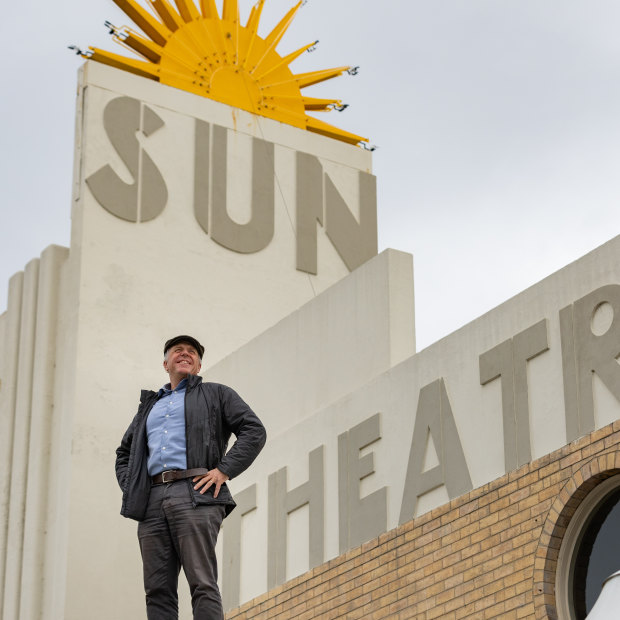
Michael Smith, owner of The Sun theatre in Yarraville.Credit: Jason South
Long before the Sun Theatre got the attention of Hollywood director Quentin Tarantino for a film screening, the art-deco gem was close to becoming a pile of rubble.
After opening in 1938 to great fanfare, the single-screen cinema was forced to close its doors because it was deemed unsanitary. And for 20 years it was left to crumble, with squatters taking up residence and teens sneaking in to cause mischief.
One of those teens was Matt Callander, who grew up in nearby Seaholme but has lived in Yarraville for more than 20 years.
“The Sun was a burnt out shell,” he recalls.
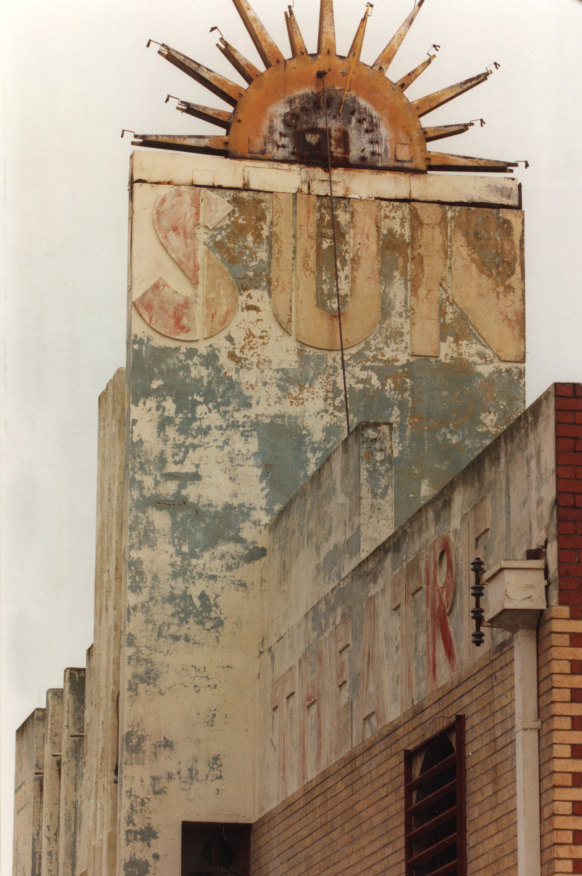
The Sun Theatre in Yarraville in March 1993.Credit: The Age
“When I was a teenager, we used to go and climb around inside there and what not.”
His clandestine route into the building was almost replicated by Michael Smith, who climbed through a hole in the back of the brick wall to take a glimpse at the inside of the building he was considering buying.
What he found was a roof caving in, graffiti everywhere, torn-up seats and needles strewn across the floor.
“It was trash, it had been closed for 20 years,” he says.
“But I just fell in love with it. It’s amazing how I managed to look past everything that was wrong and all I saw was the remnants of the old art deco past.”
Smith bought the theatre in 1995 and spent more than two years renovating it. It opened in 1997 with monthly screenings for a film club, and in 2003 then-premier Steve Bracks opened the expanded four-screen site to the public.
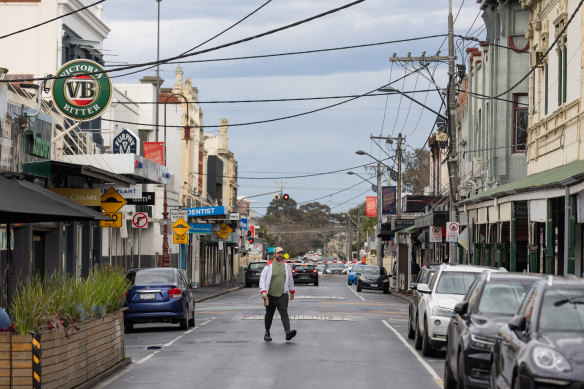
Anderson Street in Yarraville.Credit: Jason South
Now much of village life revolves around The Sun, the centre of Yarraville’s solar system. In 2016, Hollywood director Tarantino crashed a screening of The Hateful Eight at the cinema, with actors Samuel L. Jackson and Kurt Russell in tow.
When The Age visits on a drizzly Tuesday, a mum is sitting in the foyer rocking a pram back and forth before an afternoon showing. A father and his teenage son queue up and discuss which movie they should see and debate Choc Top flavours.
Outside its doors on Ballarat Street, cars have been banished and replaced with metal trees and synthetic turf of a park. The park was only meant to last for one summer and instead became permanent after locals launched a campaign to keep it.
Now it’s like it has always been there, as kids spring off coloured blocks and parents watch on with take-away coffees clasped in hands. The street is lined with cafes, a bookshop and restaurants, with people flitting in and out of them, stopping to say hi if they bump into friends.
“It was just this lovely, almost perfect storm of timing and that as more and more young families started to move in, people started to think about cafes and maybe restaurants,” Smith says.
“I’m sure the movies being on gave people confidence to open their cafes and shops, but at the same time, a cinema in isolation isn’t a very nice destination.”
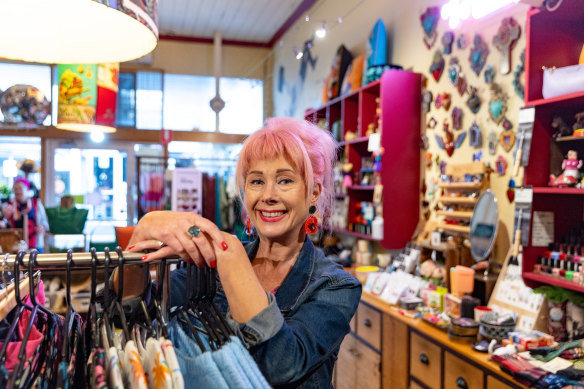
Elise Hopper, owner of Village Idiom.Credit: Jason South
Shop owner Elise Hopper says there is no other place like it in all of Melbourne.
“I don’t know anywhere else like Yarraville, and I’m sure everyone feels strongly about their own area but Yarraville is truly special.”
The pink-haired woman extols the virtues of Yarraville from her shop Village Idiom, which is as bright as she is.
“It’s extraordinary that this tiny, little village has so much personality, and it’s really close-knit.”
For new arrivals it can take a little bit of time to become “a local” in the tight community but once you start meeting people, it’s a place where people take care of each other, she says.
“It’s like an English country town, everyone knows everyone ... I know people’s names, I know their kids, I watch them grow up. I talk to them as they go through things.”
But for all the positives, Hopper says there are some things she wishes would change, including making the village more accessible.
“One of the biggest problems the village faces is that it’s not easy to get into, and I think it needs more signage, easier ways for people to find it here, because public transport is great, but people come here and go, ‘Oh my god, I didn’t know this existed’ because it’s just that little bit tucked away.”
She also wants to see the level crossing at Anderson Street dealt with, ideally with the train line put into a trench. Currently, mornings see unlucky commuters stuck on either side of the tracks, sometimes for upwards of 30 minutes.
Both the council and state government acknowledge the level crossing and freight traffic heading to the nearby port as an ongoing issue.
Sixth-generation inner westie, resident and Footscray MP Katie Hall wants to see the level crossing gone on Anderson Street, which she describes as a challenging street to drive down.
“We need to protect and preserve the built form of the village, so closing the level crossing is really the only option. You couldn’t build a trench there [for the train] and you couldn’t go over,” she says.
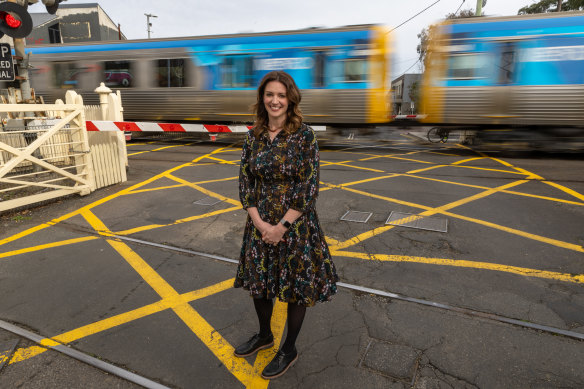
Local MP Katie Hall, whose family has been in the inner-west for six generations.Credit: Jason South
The challenge would be to ensure better connectivity for residents and visitors, the MP explains.
The crossing is set to be closed by 2030, and it is already an issue for commuters who need to cross to catch the city trains or buses with gates down for upwards of half an hour during peak times.
“It’s been this intractable problem for decades with living by the port without the proper road infrastructure in and out of the ports and trucks have always been using the inner west … with the port and roads getting busier this will absolutely transform these streets,” Hall says.
Maribyrnong council also supports the plans, and is gathering feedback on options to make sure the new crossing is accessible from next year.
It’s also concerned about the air quality and truck traffic in Yarraville, after reporting found particulates spewed by diesel trucks using residential streets to access the Port of Melbourne are being found in nearby houses, schools and childcare centres.
“Although air quality and heavy truck traffic are also a concern for Yarraville, along with the rest of our municipality, the future looks promising,” Mayor Cuc Lam says.
Part of their plan is to advocate for truck bans on Williamstown Road and the creation of “ultra-low emission zones”.
The truck problem will be alleviated when the West Gate Tunnel opens, according to Hall. The Labor MP says it will take 9000 trucks off local roads, and there will be a ban on them using Francis Street and Somerville Road as rat runs.
Parliament is set to debate the legislation next week, with funding to bring in cameras to catch any breaches.
But part of the charm of the inner west remains wrapped in its industrial identity, and some are concerned it could be lost.
Kiwi-born artist Alex Still has lived in Yarraville for seven years and used to own a popular cafe in the centre of the village.
He is concerned about rising house prices in the suburb and hopes it stays affordable for younger families.
“I’ve seen house prices in Auckland completely decimate the city … I don’t want that to happen here.”
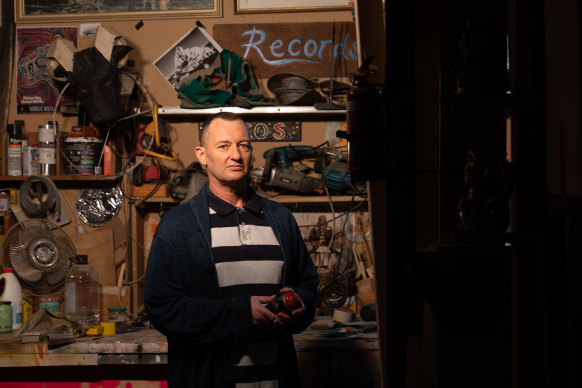
Artist Alex Still hopes Yarraville keeps its character.Credit: Jason South
The artist, who worked for art departments on major films including Lord of the Rings, said it wasn’t a suburb for property speculation.
“It’s not a suburb for real estate speculation, it’s a suburb for living, for owning one house, and I think that’s a vital aspect of this place as well.”
Still said it’s always been a melting pot, with young families, professionals and the older migrant community who moved into the area in the 1960s and ’70s.
“There’s a lot of old traditional stuff around here still, which I don’t want to lose, and I feel that’s very essential to the identity of this place. It’s engaged with its sense of its history.”
It’s something sisters Anatoli and Eleftheria Amanatidis understand. Their family has been a part of the fabric of the village for decades, and their great-grandfather was the parish priest of St Nicholas Orthodox Church for 30 years.
The pair run a successful Greek restaurant, following in the footsteps of their own grandparents who also ran a restaurant, while other family members once ran a deli, a butcher and a pizza shop in Yarraville.
When the pair go to the church for a photo with The Age, everyone coming out of Mass stops to chat to the women. In Greek, of course. One asks the pair where their yiayia is, since she usually attends daily.
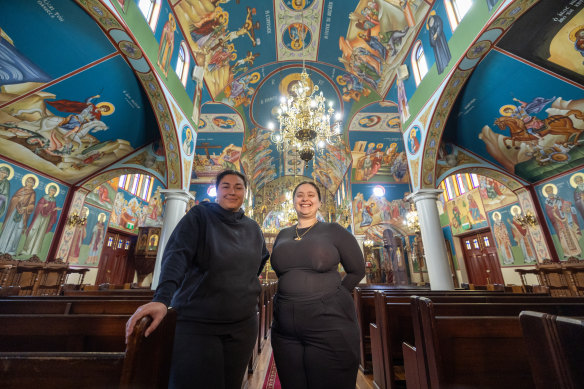
Anatoli and Eleftheria Amanatidis in the St Nicholas Orthodox Church. Their great-grandfather was the parish priest for decades.Credit: Jason South
Eleftheria said that when they opened, people in the neighbourhood said it was time for a Greek restaurant to make its return to the west.
“We get a lot of Greeks who say, ‘We don’t usually cross the West Gate’, so we’re obviously doing something right.”
But a fire has shuttered the restaurant for now, and the reaction from the community shocked the sisters.
“After the fire people in the street were crying because it meant so much to them,” Eleftheria says.
From its founding in the 1850s, there have been factories and industry along the banks of the Maribyrnong River in Yarraville, including a bone mill (to crush bone for fertiliser), an acid works and a sugar refinery, which is still in operation. At what is now the popular Cruikshank Park, west of Anderson Street, there were up to 11 quarries providing stone used to maintain railways, supply ballast and build Melbourne Town Hall and Pentridge Prison.
Before the industry moved in, the Indigenous groups living between Footscray and Williamstown were the Bunurong (Boon Wurrung) and Woi Wurrung (Wurundjeri) tribes.
Alex Still doesn’t want to see the area lose its history, and become overdeveloped like some other suburbs.
“I don’t want this place to be Fitzroy, I don’t want it to be Prahran,” he says.
While Katie Hall understands concerns, particularly with the proposed development of the site of the former Bradmill Denim Factory into homes and apartments, she said it showed how eager people were to live in such a wonderful community.
“It’s like Hotel California, you never leave,” she says.
It’s something that’s echoed by Matt Callander, the man who once snuck into the abandoned cinema as a teen. After moving into the area 20 years ago, he has seen it evolve into a beloved and incredibly friendly community.
Now he regularly socialises with his neighbours, there’s even a WhatsApp group for the street, and he believes people have become more open since COVID. He also enjoys showing off the area to visitors.
“Whenever people come over, we walk down to the pop-up park, and have a look at the Sun Theatre and that’s a critical part,” he says.
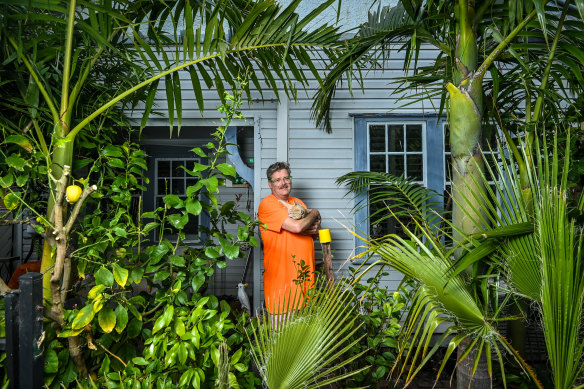
Matt Callander, with cat Sam, has lived in the suburb for more than a decade and helped battle the council so he could plant trees that blocked out the train line.Credit: Justin McManus
“People come from quite far to go to the Sun because they really like the vibe.”
And the owner is proud it’s become a destination for people from all over the city.
“I’ll never forget there was a lady who wanted to make sure we knew that she was from Kooyong pretty quickly … and she was just standing out the front, her perfect hair and she just looked around said, ‘It’s quite nice really’.”
Get the day’s breaking news, entertainment ideas and a long read to enjoy. Sign up to receive our Evening Edition newsletter here.
correction
An earlier version of this article misattributed a quote to City of Maribyrnong Mayor Cuc Lam.